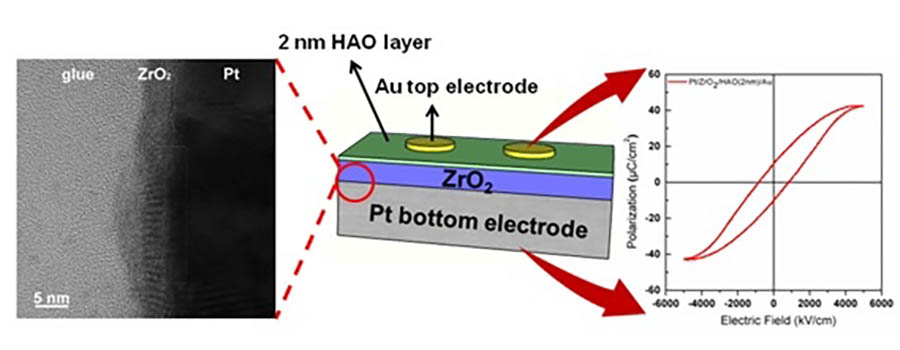An international team led by University of Minho Physics Center managed to efficiently store small amounts of energy in a capacitor, which could be charged/discharged in nanoseconds. It is admitted that this innovation may have applications in electric vehicles and medical devices, among others.
The work is highlighted in the networks of the European Research Infrastructure Consortium and came out in the reputable "Journal of Materials Chemistry".
The project had a partnership with the State Universities of Pennsylvania (USA), Central Tamil Nadu (India), Abdelmalek Essaadi (Morocco) and the National Institute of Materials Physics (Romania).
The urgent transition to green energy is pushing the scientific agenda to develop new energy storage solutions. Batteries are mainly used for providing stable power over a long period of time, due to their slow discharge process.
Capacitors, on the other hand, can store a small amount of energy and charge and discharge quickly, on the order of nanoseconds. This capacitor can thus be used in applications where fast power supply is required.
The scientific team then found that a thin layer of ceramic oxide (zirconium dioxide), 5 nanometers thick, coupled with an insulating layer (hafnium and aluminum oxide), 2 nanometers, stores 54.3 joules per cubic centimeter, with an efficiency of 51%.
This corresponds to a 55% increase in stored energy density and a 92% increase in efficiency when compared to an ordinary zirconium dioxide capacitor.
“In this way, we demonstrate that ferroelectric materials at the nanoscale, allowing for efficient and high-density energy storage, are strong candidates for this type of application”, says the coordinator of the work, José Pedro Silva.
The researcher points out that these nanoscale materials are manufactured in the Thin Film Laboratory of the Physics Center of the University of Minho Science School, in Braga. The study involved a dozen authors, including Maria de Jesus Gomes, João Miguel Silva, Mário António Pereira and José Santos from that center.






















Comments